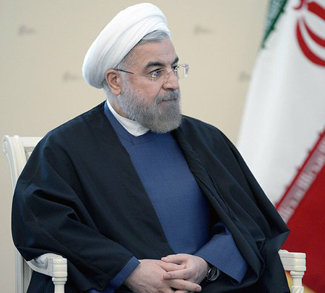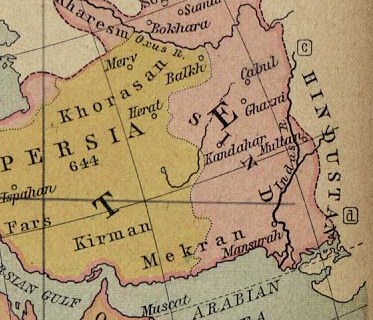As Donald Trump retakes the helm as president, he confronts one of America’s enduring Achilles heels—the Middle East, a region rife with seismic political and security upheavals. Adding to the recent activity in the region, Israel has recently received $7.4 billion in arms sales to improve its ‘defense capabilities.’ Moreover, Trump has also threatened to ‘obliterate’ Iran if he is assassinated. Given such controversial remarks and his renewed allegiance to a pro-Israel line carried on from his first term, a question now arises: Will Trump be able to navigate the quagmire rampant in the Middle East by fostering dialogue with Iran and facilitating mediation between Iran and Israel?
Trump Administration’s Middle East Policy: Hawkish or Dovish?
Traditional Republicans and neoconservatives advocate for a militaristic foreign policy in the region. However, Trump’s transactional approach to diplomacy can diverge from the hawkish norm from time to time. Even when signing a memo in early February to reinstitute economic pressure towards Iran from his first term, Trump left the door ajar for future negotiations, saying he was “torn” on signing the document. The contradictions continue through the positions and political rhetoric of Trumps own appointees.
Michael DiMino, the new US Deputy Assistant Secretary of Defense for the Middle East, emphasizes US troop withdrawal from Iraq and Syria. He supports diplomatic engagement with Iran and Yemen’s Houthi rebels. In contrast, Trump’s current administration, led by the US Secretary of State, Marco Rubio, National Security Advisor, Michael Waltz, and Secretary of the Treasury, Scott Bessent, has adopted an intransigent and hardline stance in opposition to Iran’s nuclear development and foothold in Iraq, Syria and Yemen. Their policy standpoints converge to counter Iran by reinforcing the ‘maximum pressure strategy’ through military deterrence, stringent economic sanctions, and forging regional alliances with key allies, including Israel.
Strategic Conundrum: Israel and the U.S vs Iran and its Axis of Resistance
The Iran-Israel confrontation heads down a perilous path. According to the Armed Conflict Location and Event Data Project (ACLED), Israel has expanded its military activities with neighboring states now on its radar. It has carried out more than 17,000 attacks since October 7 on the occupied Palestinian territory, Lebanon, Iran, Syria and Yemen. In a concerted effort to deter and rein in this axis of resistance, Israel has conducted repeated counterproliferation strikes against Iranian allies and assets in Syria and Yemen and perpetrated cross-border attacks on Lebanon and Iraq.
The Israel-Hezbollah conflict dealt a severe blow to Iran’s proxy, Hezbollah. The Ba’ath regime’s ouster from power further constrained logistical support for its operations in Lebanon and proved detrimental to its strategic presence on Israel’s northern border, debilitating Iran’s proxy network. A political vacuum and diminutive military capacity similarly jeopardize Hamas in the wake of assassinations of prominent leaders, namely Yahya Sinwar, Mohammed Deif, and Ismail Haniyeh.
Trump and Iran also have a checkered political history. While Trump argued that the Joint Comprehensive Plan of Action (JCPOA) failed to curb Iran’s nuclear program, it is evident that US withdrawal in 2018, which was cheered on by Israel, has only emboldened Iran in furthering its nuclear ambitions. Furthermore, Trump designated Iran’s Revolutionary Guards as foreign terrorist organization. In September 2019, the US Treasury Department also imposed sanctions on Iran’s central bank. With Trump imposing wide-ranging sanctions that effectively froze Tehran’s assets abroad, its economy is in the doldrums as Iran requires access to its foreign exchange reserves and currency transfers to balance trade. In addition, Trump’s order to assassinate Qassem Soleimani, who led the Iranian Islamic Revolutionary Guard Corps’ Quds Force, ratcheted up tensions in the region as well.
Despite its futility in deterring Iran in the previous term, the current Trump administration’s renewed hawkish posture involves reimposition of a maximum pressure campaign which further aggravates hostilities with Iran through crippling economic sanctions and diplomatic isolation, including throttling its oil exports. Moreover, the United States has re-designated the Iran-backed Houthis as a terrorist organization. It also instructed the US Agency for International Development (USAID) to cut ties with groups that made payments to Houthis or ‘criticized efforts to counter’ its attacks in the Red Sea, despite Houthis signaling an end to the attacks with the release of the Galaxy Leader cargo vessel in support of the ceasefire agreement between Israel and Hamas.
At this critical juncture, the apprehensions surrounding a massive retaliation stem from Israel’s provocative activities which risk escalating conflicts into a multi-front war. With Iran embroiled in a hostile strategic environment that poses an existential threat, the impetus to nuclear weapons development is augmented. Consequently, it has now accelerated its uranium enrichment to 60 percent purity, a level nearing weapons-grade enrichment, raising proliferation concerns.
Will Iran be locked into a Zero-Sum Game?
The US-Israel strategic nexus compounds the asymmetry in the zero-sum equation, tilting the scales in Israel’s favor. While Trump’s policies remain to be fully unraveled, an ominous foreboding precedes the regional developments. With mounting discord, there is now little hope that the United States and Iran will be able to iron out their differences and resolve the impasse on Tehran’s nuclear program. In the face of Israel’s regional ambitions, Iran is propelled to recalibrate its regional strategy through asymmetric tactics and nuclear posturing. As Israel’s recent actions in the Gaza strip engulf the Middle East, the regional balance of power is precariously poised to tilt, ushering in volatility.
The views expressed in this article belong to the author(s) alone and do not necessarily reflect those of Geopoliticalmonitor.com.




